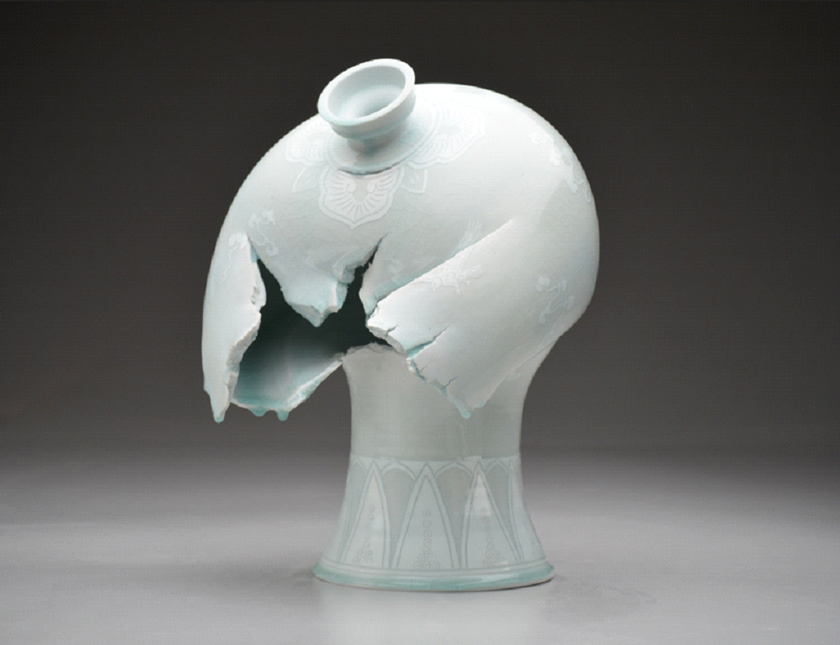
Yu Geun-Hyeong
해강 유근형 | 1894-1993
and his son Yu Kwang Yul (유광율 1942 ) Angular Bottle
Yu Geun-Hyeong (유근형) is a key figure in the revival of Goryeo celadon pottery in early 1930’s. Yu Kwang Yul (유광율) is his eldest son, continuing his family’s legacy of celadon craftsmanship while integrating contemporary artistic expressions. Yu Kwang Yul (유광율)’s work emphasizes the pursuit of the signature jade-green glaze, achieved through reduction firing, and explores intricate surface decorations, including inlay patterns. Recognized as a Master Craftsman, Yu has advanced celadon research and production, ensuring its continuity across generations. The exhibition features both Yu Geun-Hyeong and Yu Kwang Yul’s celadon works, showcasing both traditional methods and modern interpretations.
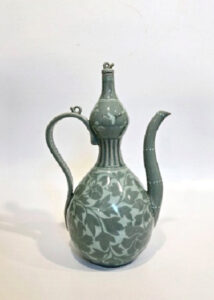
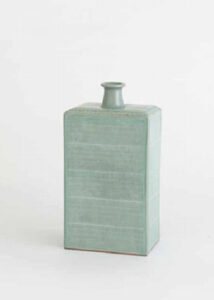
Kim Yik-Yung
김익경 | b. 1935
Kim initially pursued chemical engineering, earning a Bachelor of Science degree from Seoul National University in 1957. Her passion for ceramics led her to the College of Ceramics at Alfred University in New York, where she obtained a Master of Fine Arts in 1961.
During her time at Alfred, she was influenced by renowned potter Bernard Leach.
Kim’s work is deeply influenced by Joseon baekja (white porcelain), celebrated for its simplicity and naturalness. She has been instrumental in bringing Korea’s ceramic heritage into the modern era, balancing aesthetic beauty with practicality. In 2004, Kim was the recipient of the “Artist of the Year” award from the National Museum of Modern and Contemporary Art, acknowledging her significant contributions to Korean contemporary ceramic art.
Her ceramics have been showcased internationally and are part of esteemed collections, including National Museum of Contemporary Art, Korea, British Museum, London, Victoria and Albert Museum, London, The Metropolitan Museum of Art, Smithsonian Institution, Washington D.C. and The Smart Museum of Art at University of Chicago.
Kim Yik-yung’s legacy continues to influence and inspire the field of contemporary ceramics, both in Korea and globally.
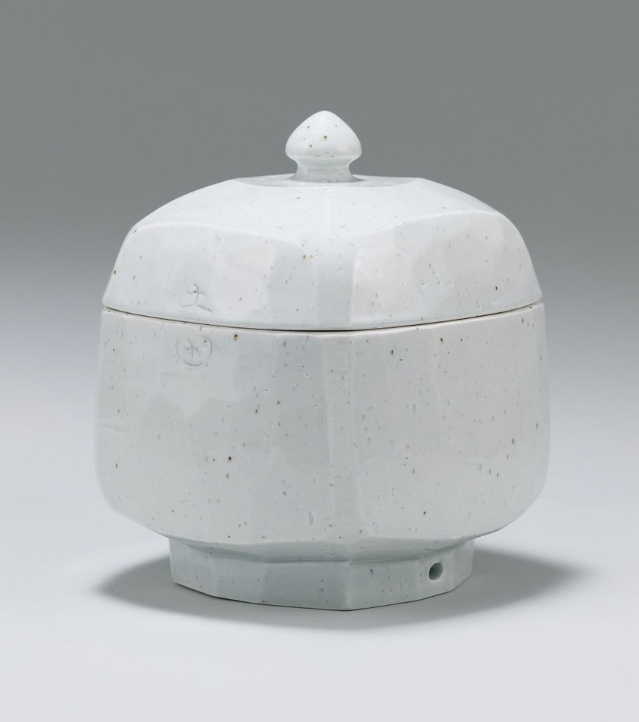
Lidded Jar,
2008
Porcelain
Kim Seyong
김세용 | b. 1946
국화문 이중 투각 시리즈
Kim Seyong (b. 1946) is a renowned Korean ceramic artist celebrated for his mastery of celadon and his expertise in double openwork carving techniques. The first inspiration to pursue a career in ceramics came in his teens when he was mesmerized by the sheer richness of the Goryeo period celadon found at the National Museum of Korea. He had a premonition that was about to unfold before him. “It was almost as though his previous life came alive again.”
Kim is known for his high fired celadon pieces (fired up to 1300°c) and also for double-walled open work (piercing) technique. He believes in “creating celadon apt for the current period”. He has been designated as Master Craftsman of Korea in 2002 and was awarded the Order of Cultural Merit (Hwagwan) by the Ministry of Culture, Sports, and Tourism in 2017.
His work has been collected by Queen Elizabeth II of the UK and by the Royal Palace of the Dalai.
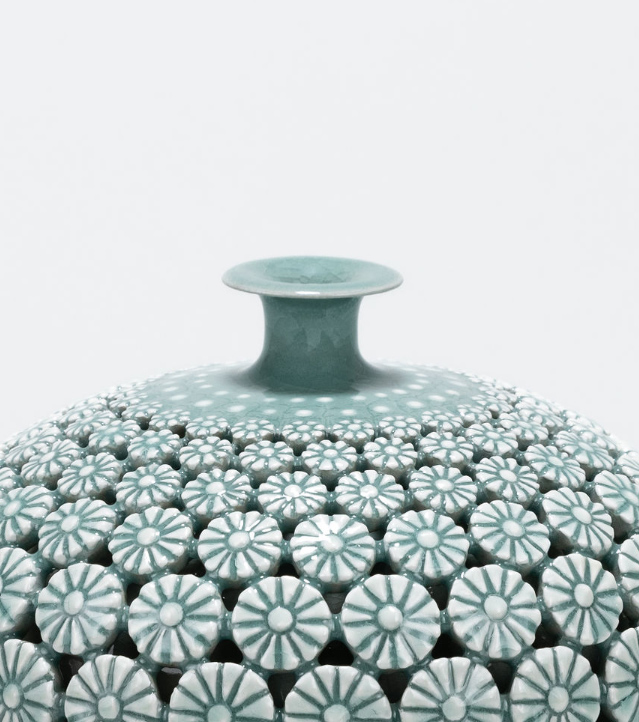
Lee Kang Hyo
이강효 | b. 1961
Lee Kang-hyo (이강효) is a distinguished ceramic artist renowned for his Buncheong ware. Lee’s work uniquely blends the robust forms of onggi with the expressive surface decorations characteristic of buncheong ware, a 15th-16th century Korean ceramic tradition. His creations range from large-scale jars to smaller functional pieces, all reflecting a deep connection to nature and Korean cultural heritage.
His works have been exhibited internationally and are part of prestigious collections, including the Victoria and Albert Museum in London, the British Museum, the Museum of Fine Arts in Boston, and the Art Institute of Chicago.

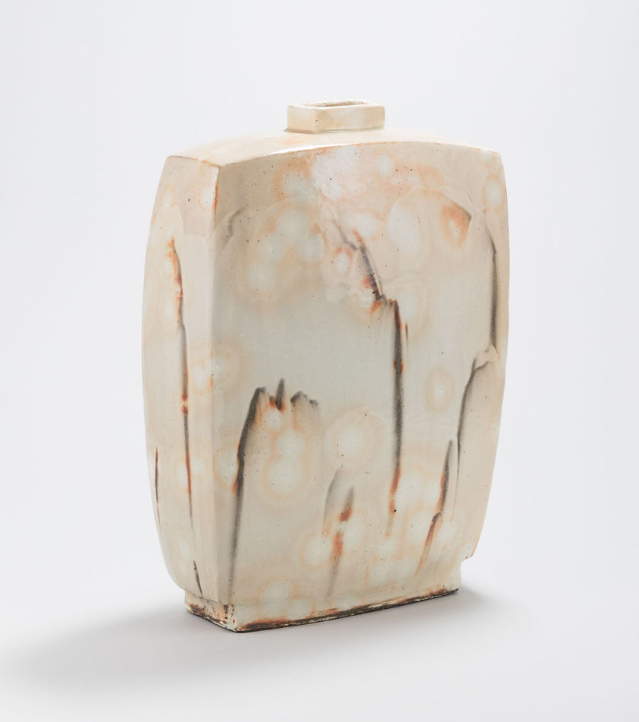
분청산수2 Mountain-water
2019
적점토 (Buncheong ware: stoneware with natural ash glaze)
36x17x50cm
Choi Sung Jae
최성재 | b. 1962
Using traditional stoneware “buncheong ware” techniques and finished with natural ash glaze, this piece reflects the artist’s exploration of simplicity and stillness. The soft curves and muted tones evoke a sense of inner calm, resonating with the philosophical underpinnings of Buddhism, which often emphasizes mindfulness and presence. This work, white slip finger drawing of ducks, draws inspiration from nature, allowing the natural processes of glazing and firing to reveal unexpected beauty, symbolizing harmony between the artist’s intention and the forces of nature.
His forms—flat bottles, rectangular jars, and faceted vessels—serve as canvases for dynamic surface treatments. He applies white slip through painting, pouring, dipping, and expressive mark-making using brushes, branches, straw, or his own fingers. His process, rooted in the balance between clay and fire, echoes traditional techniques like “slip brushing” and “dipping.”
Choi’s work, influenced by Korean ink landscape paintings, explores empty spaces and subtle tonal variations. His ceramics, showcased in solo exhibitions worldwide, are held in prestigious collections, including the Victoria and Albert Museum, the Art Institute of Chicago, and the Museum of Fine Arts, Boston.
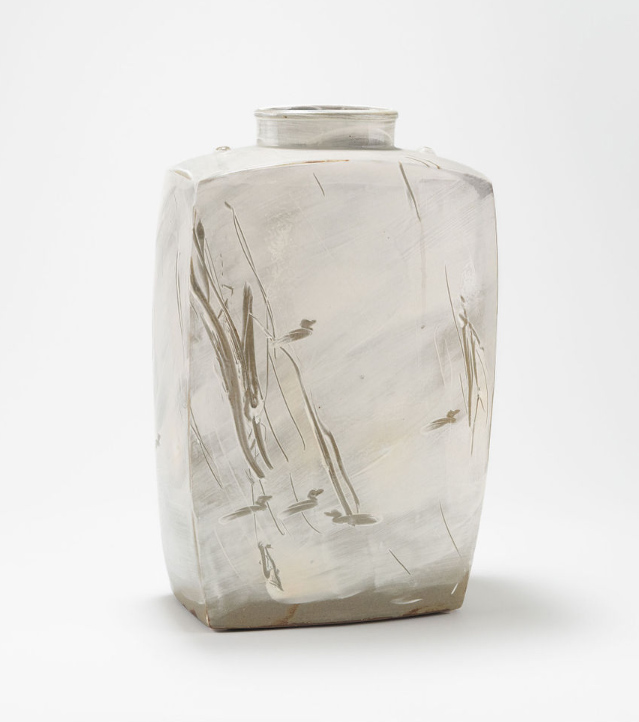
Korean, B. 1962
Meditation – Staying VI
12 x 15 inches
1994
Stoneware with natural ash glaze (Buncheong Ware)
Huh Sang Uk
허상욱 | b. 1967
A leading contemporary ceramic artist, Huh Sang Uk reinterprets the Korean tradition of buncheong ceramics with a modern sensibility. Utilizing traditional techniques such as sanggam (inlay) and bakji (carving), he creates dynamic surfaces that evoke elements of nature—leaves, flowers, fish, and birds—infusing his works with vitality and harmony. With over 30 years dedicated to buncheong, his ceramics bridge past and present, embodying the philosophy of beopgochangsin (honoring tradition while innovating for the future).
His works are exhibited worldwide, and collected in prestigious collections, including the Victoria & Albert Museum and Musée Ariana.
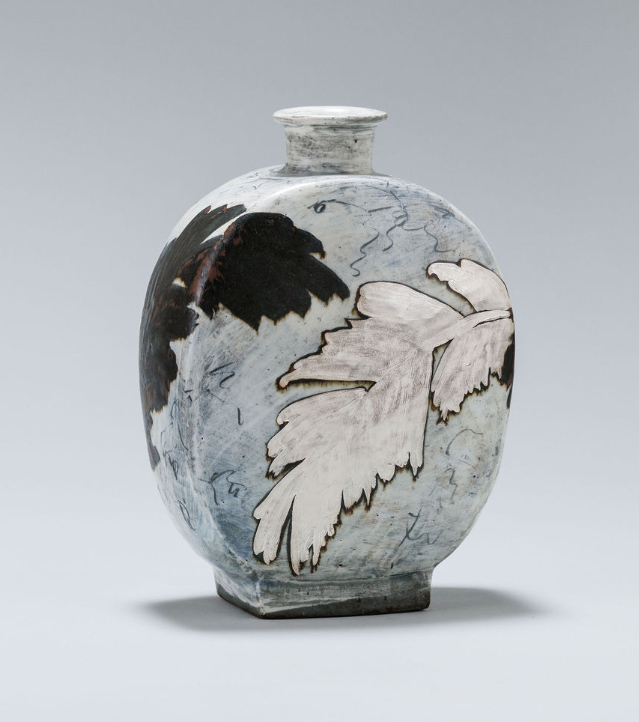
Buncheong, white slip, iron oxide, silver lustre
Hyejeong Kim
김혜정
Hyejeong Kim is a distinguished Korean ceramic artist known for her unique fusion of East Asian traditions and modern British influences. Born in Japan, she returned to Korea at the age of 11, a move that significantly shaped her creative identity.
⦁ 1993: Bachelor of Arts in Ceramics, Ewha Womans University, Seoul, Korea
⦁ 1995: Master of Arts in Ceramics, Tokyo University of the Arts, Japan
⦁ 1999: Doctoral Degree in Ceramics, Tokyo University of the Arts, Japan
⦁ 2000-2003: Artist residency in the United Kingdom, working in the studio of renowned potter Rupert Spira in Shropshire
Kim’s creations are deeply rooted in the ceramic traditions of China, Korea, and Japan, yet they are distinctly influenced by modern British ceramics. She masterfully crafts her pieces on the wheel, achieving perfect symmetry before intentionally altering their forms by hand. This process results in organic shapes reminiscent of blossoming flowers or maturing fruits.
⦁ 2020: Finalist, Loewe Foundation Craft Prize
⦁ 2005: Winner, The Evening Standard Homes & Property Award for Best Domestic Product at the Chelsea Crafts Fair, London
Her pieces have been exhibited globally and are celebrated for their unique fusion of functionality and sculptural beauty.

Korean, born in Japan
Earth Matters – Bowl and Seeds
2019
Stoneware
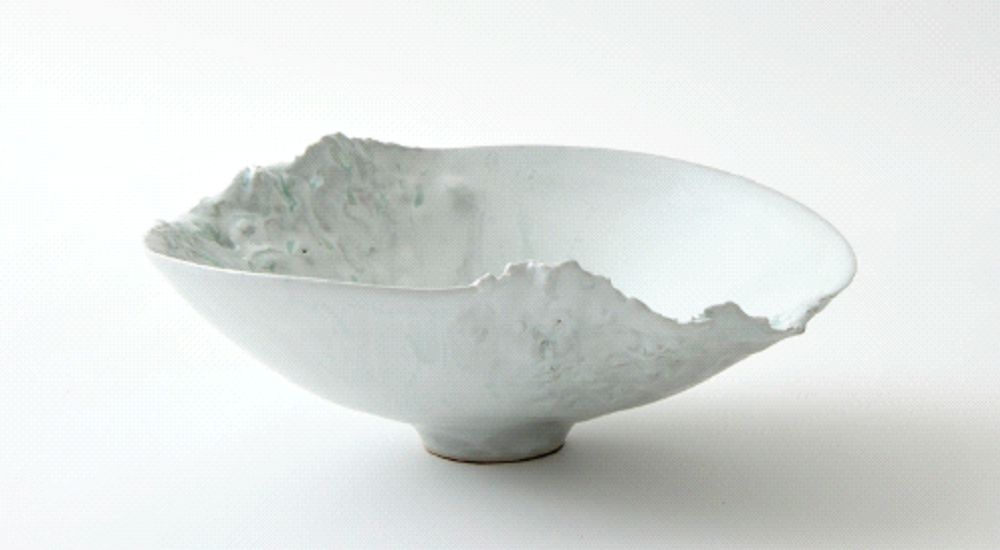
Date made : 2024
Place made : Republic of Korea
Medium : Ceramics (Stoneware, white-clay-body, White, Pale, Celadon Blue and Green glazes, 1260°C
Dimensions : 400 * 470 * 180 (mm)
Weight : approx 6000 (g)
Kang Seung-cheol
강승철 | b. 1972
Onggi ceramics, traditional Korean earthenware, have evolved over centuries, adapting to cultural and practical needs. Dating back to the Three Kingdoms period (57 BCE–668 CE), early onggi were simple, unglazed storage vessels. By the Goryeo (918–1392) and Joseon (1392–1897) dynasties, techniques improved, with artisans developing specialized clay and ash-glazed surfaces to enhance durability and breathability. These ceramics were widely used for fermenting foods like kimchi, soy sauce, and doenjang. Today, while industrial materials have replaced some traditional uses, onggi remains a valued cultural craft, with artisans preserving and innovating on its forms and techniques.
Kang is instrumental in elevating the once humble utilitarian storage vessel to be reimagined as a refined art forms.
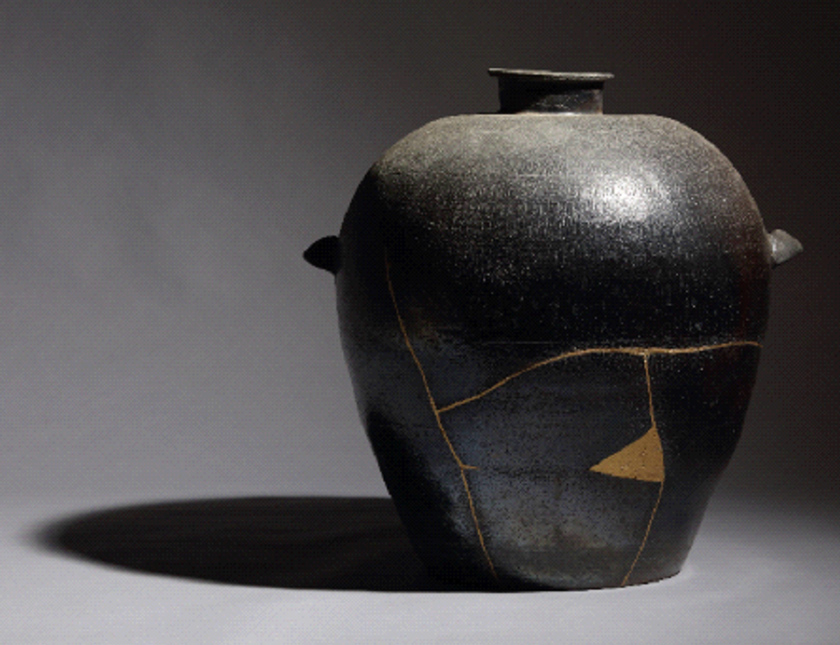
Size : W 38 x L 38 x H 50 cm
Steven Young Lee
Korean American | b. 1975
Steven Young Lee, born in 1975 in Chicago, Illinois, is a Korean American ceramic artist renowned for his innovative approach to traditional pottery forms.
Lee’s work explores the intersection of cultural identity and traditional ceramic forms. He often deconstructs and reinterprets iconic pottery shapes, such as the Korean Gyoro Celadon and white porcelain Moon Jar, to challenge notions of perfection and beauty. His pieces frequently feature intentional imperfections, prompting viewers to question cultural expectations and the concept of authenticity.
In 2006, Lee became the Resident Artist Director of the Archie Bray Foundation for the Ceramic Arts in Helena, Montana, a position he held for 15 years. His work has been exhibited internationally and is included in the collections of institutions such as the Smithsonian Museum and the Los Angeles County Museum of Art.
